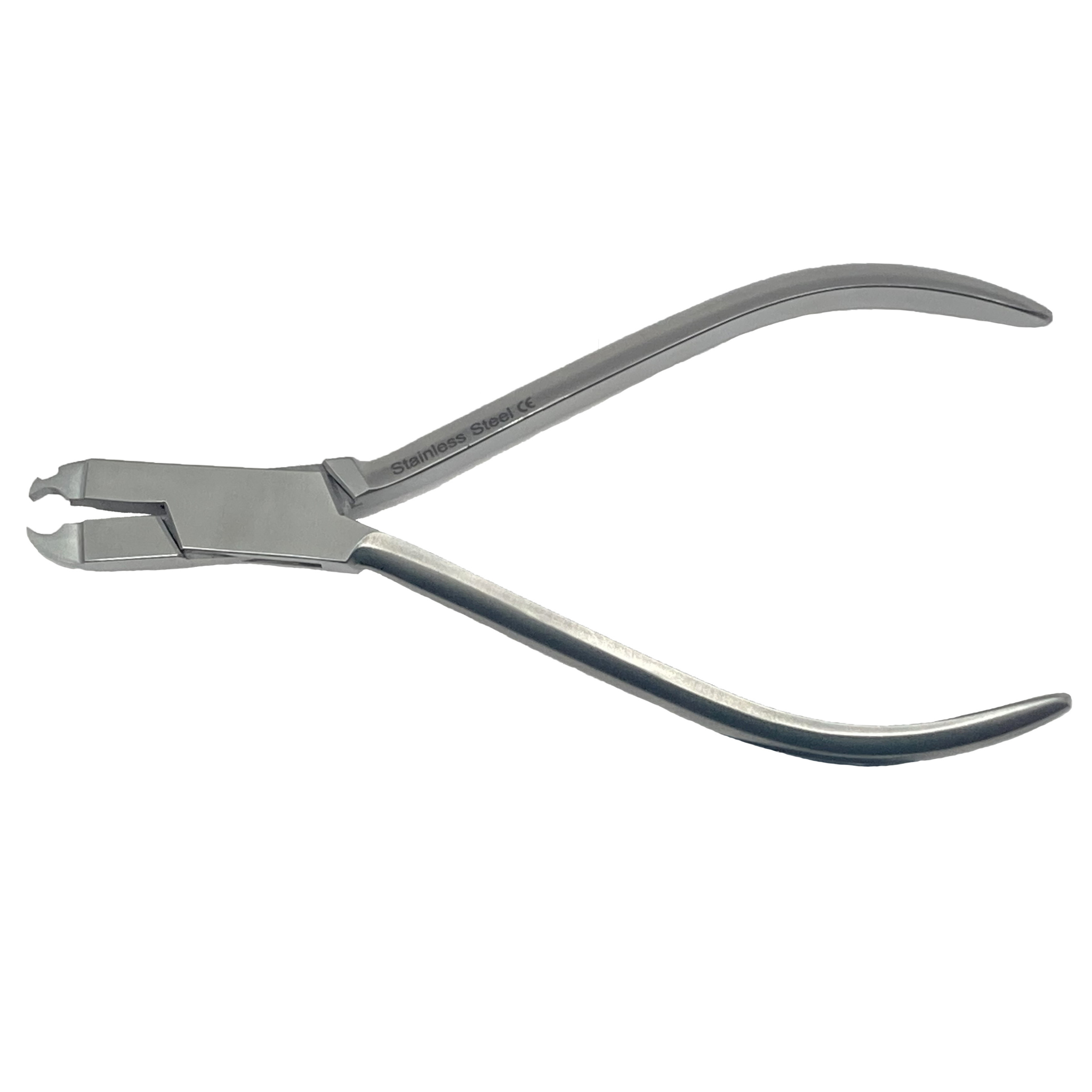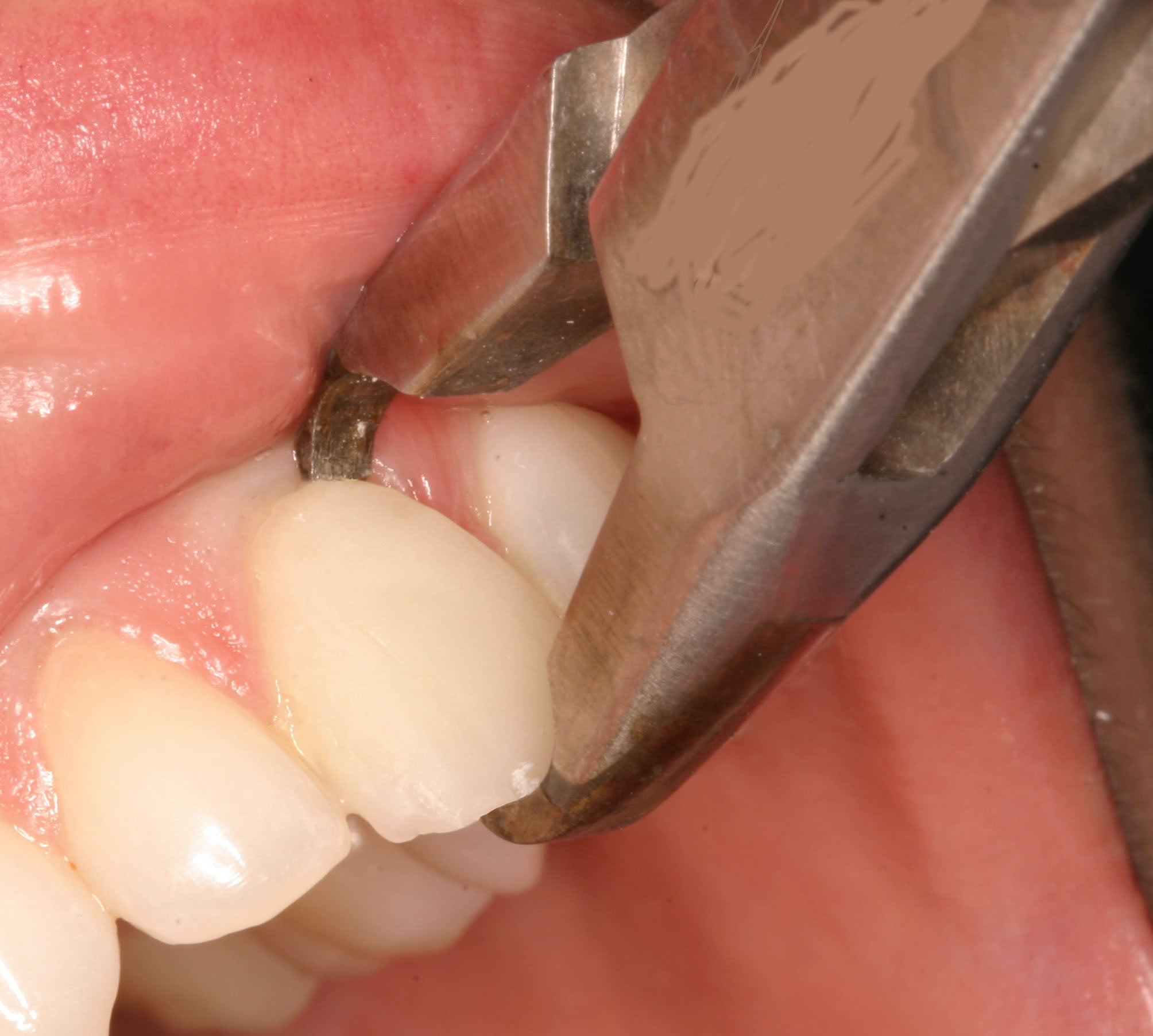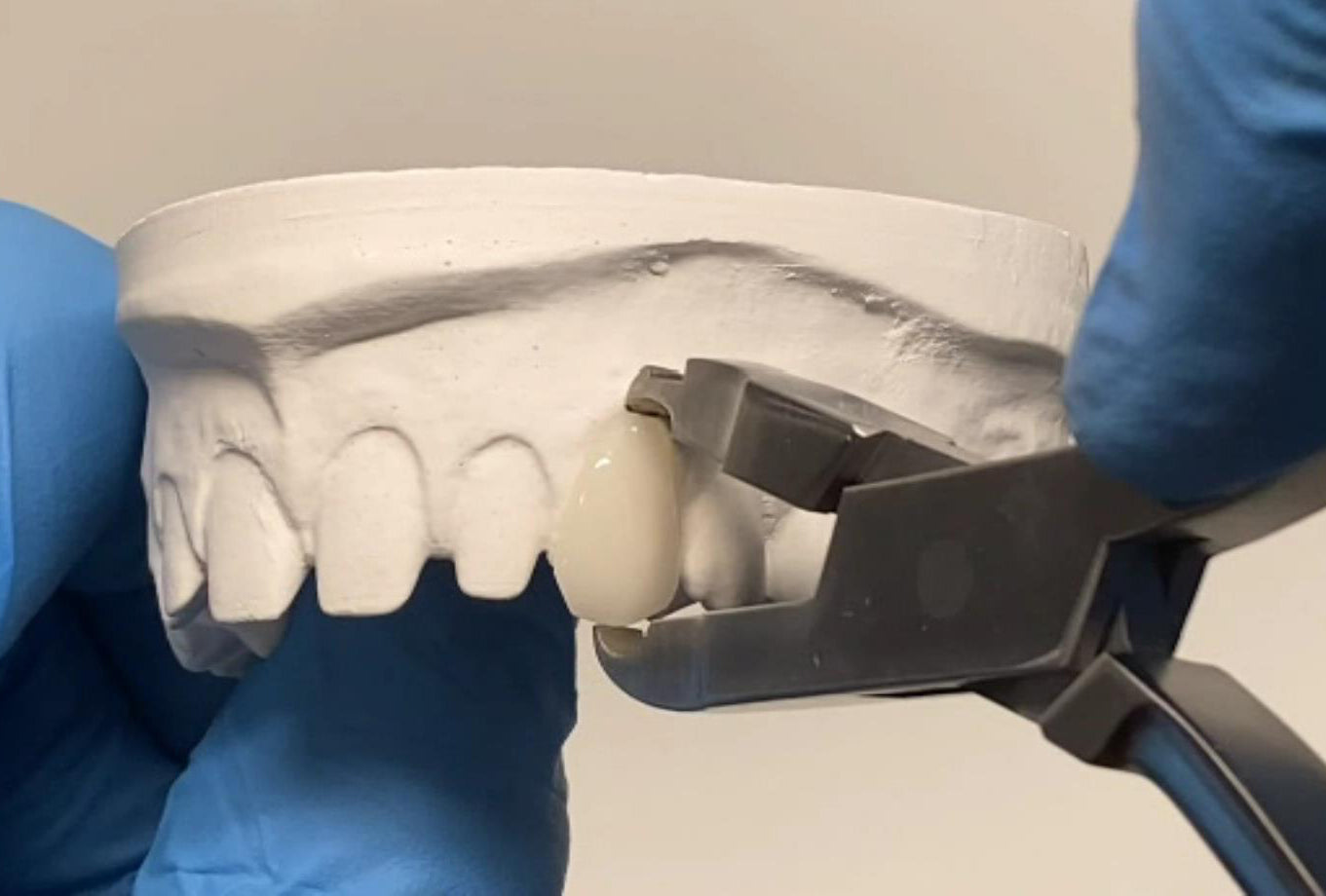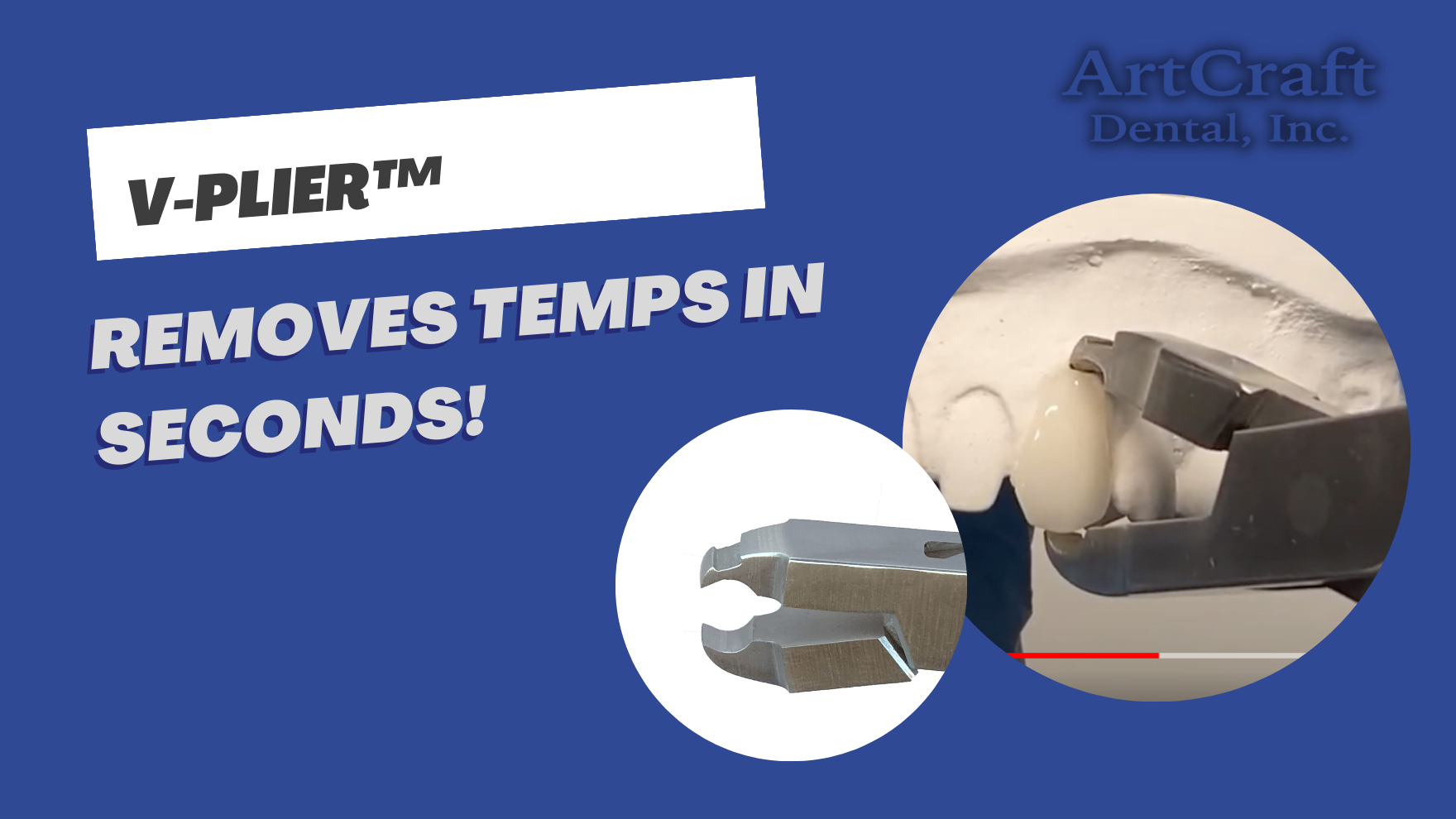





V-Plier™
Take the pain out of temporary veneer removal. Temps are removed painlessly in seconds with a simple squeeze of the handles. No more drilling or prying!
✔️ Invented and patented by Dr. Jeff Rosenberg

Sterilization Instructions
IMPORTANT INFORMATION PLEASE READ CAREFULLY BEFORE USE INTENDED FOR USE BY DENTAL PROFESSIONALS ONLY RECOMMENDED STERILIZATION PROTOCOL FOR STAINLESS STEEL INSTRUMENTS. CAUTION: Please read all information contained in this insert. Incorrect handling and care as well as misuse can lead to premature wear of surgical/dental instruments. Instruments must be handled with the greatest care when being transported, cleaned, sterilized and stored. This is especially true for blades, fine points and other fragile areas. All persons using this device should have knowledge in the use and handling of surgical instruments, accessories and related equipment. Every instrument must be cleaned and sterilized prior to its initial use as well as all subsequent uses. Inspection Carefully examine each instrument before each use. Never use a damaged instrument. Ultrasonic cleaning is recommended. Distilled water must be used if demineralization and filtration of the water supply is not achieved prior to the final connection or outlet used to supply water for the ultrasonic cleaning unit. The chlorine in tap water is a major contributing factor for pitting and corrosion on instruments. It is important to strictly adhere to the manufacturer’s instructions regarding the concentration of cleaning solution, time and frequency. After the ultrasonic cycle, rinse thoroughly and completely dry the instruments. Instruments that are in sterilization trays need to be removed and completely dried, as well as the sterilization tray itself. Not completely drying the instruments prior to autoclaving causes spotting on the instruments. Cleaning and rinsing must take place after each use for best results. Failure to clean properly may result in adherent particles or dried proteins that may resist cleaning and complicate future sterilization. Enzymatic cleaners should also be used to remove protein deposits. Sterilization Distilled water must be used if demineralization and filtration of the water supply is not achieved prior to the final connection or outlet used to supply water for the sterilizer. Tap water causes corrosion which will lead to rust. As with the ultrasonic, closely follow the manufacturer’s instructions regarding operation and loading as well as sterilization time specifications. Standard autoclave cycle: Steam sterilize for at least 4 minutes at 270°F/132°C or 30 minutes at 250°F/121°C. Recommend 30 minute dry time after sterilization cycle. Other time and steam temperature cycles may also be used. However, user must validate any deviation from the recommended time and temperature. (Note: Contact the manufacturer of your steam autoclave to confirm appropriate temperatures and sterilization times.) Do not exceed 280° F/137°C. Hinged instruments must be cleaned, sterilized and stored in the open position. Cold sterilization is not recommended. The harsh chemical solutions used in cold sterilization can cause corrosion problems with the instruments. Other factors to remember: - Do not use corrosive cleaning agents (i.e. bleach). Cleaning solutions and rinses should be at or near a neutral pH (7.0). - Do not use abrasive cleaners. - Only a soft bristle brush should be used. - Check and retighten any fittings that might have vibrated loose during the ultrasonic cycle. - Lubricate hinged instruments with paraffin oil after cleaning and before sterilization. - Instruments that have locking mechanisms (i.e. Needle holders, Scissors, Hemostats) must be cleaned, sterilized and stored with the locks in an open position. Sterilizing in the locked position can cause the box lock or tips to fracture.
ArtCraft Dental, Inc. 6628 Warm Breeze Ln. Dallas, TX 75248
Sterilization Instructions
IMPORTANT INFORMATION PLEASE READ CAREFULLY BEFORE USE INTENDED FOR USE BY DENTAL PROFESSIONALS ONLY RECOMMENDED STERILIZATION PROTOCOL FOR STAINLESS STEEL INSTRUMENTS. CAUTION: Please read all information contained in this insert. Incorrect handling and care as well as misuse can lead to premature wear of surgical/dental instruments. Instruments must be handled with the greatest care when being transported, cleaned, sterilized and stored. This is especially true for blades, fine points and other fragile areas. All persons using this device should have knowledge in the use and handling of surgical instruments, accessories and related equipment. Every instrument must be cleaned and sterilized prior to its initial use as well as all subsequent uses. Inspection Carefully examine each instrument before each use. Never use a damaged instrument. Ultrasonic cleaning is recommended. Distilled water must be used if demineralization and filtration of the water supply is not achieved prior to the final connection or outlet used to supply water for the ultrasonic cleaning unit. The chlorine in tap water is a major contributing factor for pitting and corrosion on instruments. It is important to strictly adhere to the manufacturer’s instructions regarding the concentration of cleaning solution, time and frequency. After the ultrasonic cycle, rinse thoroughly and completely dry the instruments. Instruments that are in sterilization trays need to be removed and completely dried, as well as the sterilization tray itself. Not completely drying the instruments prior to autoclaving causes spotting on the instruments. Cleaning and rinsing must take place after each use for best results. Failure to clean properly may result in adherent particles or dried proteins that may resist cleaning and complicate future sterilization. Enzymatic cleaners should also be used to remove protein deposits. Sterilization Distilled water must be used if demineralization and filtration of the water supply is not achieved prior to the final connection or outlet used to supply water for the sterilizer. Tap water causes corrosion which will lead to rust. As with the ultrasonic, closely follow the manufacturer’s instructions regarding operation and loading as well as sterilization time specifications. Standard autoclave cycle: Steam sterilize for at least 4 minutes at 270°F/132°C or 30 minutes at 250°F/121°C. Recommend 30 minute dry time after sterilization cycle. Other time and steam temperature cycles may also be used. However, user must validate any deviation from the recommended time and temperature. (Note: Contact the manufacturer of your steam autoclave to confirm appropriate temperatures and sterilization times.) Do not exceed 280° F/137°C. Hinged instruments must be cleaned, sterilized and stored in the open position. Cold sterilization is not recommended. The harsh chemical solutions used in cold sterilization can cause corrosion problems with the instruments. Other factors to remember: - Do not use corrosive cleaning agents (i.e. bleach). Cleaning solutions and rinses should be at or near a neutral pH (7.0). - Do not use abrasive cleaners. - Only a soft bristle brush should be used. - Check and retighten any fittings that might have vibrated loose during the ultrasonic cycle. - Lubricate hinged instruments with paraffin oil after cleaning and before sterilization. - Instruments that have locking mechanisms (i.e. Needle holders, Scissors, Hemostats) must be cleaned, sterilized and stored with the locks in an open position. Sterilizing in the locked position can cause the box lock or tips to fracture.
ArtCraft Dental, Inc. 6628 Warm Breeze Ln. Dallas, TX 75248
Warranty
All of our products have a 60-day money back guarantee.
Warranty
All of our products have a 60-day money back guarantee.






